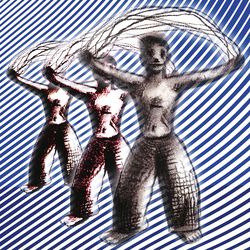A problem with the future is that no one has been there. So, there are no stories, no research, no evidence on what it is like out there. We step into the future with neither guides nor maps. As philosopher of history R.G. Collingwood warns, “The future leaves no documents.”
Future is different from Time. By the clock, Australians live in the future compared with us. Some stars that twinkle in the night sky died millions of years ago. The future is what comes hereafter. It is humankind’s destiny to worry, yearn and fear the future. Climate change makes thinking about the future critical because what we do in the next 30 years will determine the fate of the planet for thousands, perhaps millions of years.
Experts say to discover the future one must know the past. Historian David Christian says, “The strangest thing is that our only clues about the future lie in the past. That’s why living can feel like driving a racing car while staring into the rearview mirror. No wonder we sometimes crash.” Literature also can offer metaphorical clues. The soothsayers in Dante’s Inferno were punished by having their heads twisted backwards. Like them, we enter the future by looking back into the past.
To understand the past, historians believe we must examine bygone events and processes from multiple perspectives—dive “pretty deep” as philosopher David Hume advised, and paradoxically also go “pretty wide”. Moving between scholarly disciplines unlocks secrets and solves many mysteries. Christian, who coined the phrase “big history”, says multi-disciplinary perspectives can weave together threads from many domains of knowledge, creating new insights and creative ways of thinking. Discipline-crossers created the paradigms of modern science, such as big bang cosmology, which linked the physics of the very large and the very small, or modern genetics, which connects chemistry, biology, and physics.
There is one difference with the past. Broadly speaking, we know what happened. Hitler lost the war. Apollo 11 took men to the moon. But we face the existential unknowable mystery of the future every moment of our lives. The future is yet to arrive. Many possible scenarios lie curled in its womb. Then, in a flash, all but one disappears, and we are left with a single present.
Besides, no clues from the past are available for a jaw-dropping future that awaits us—we are on the cusp of becoming a new type of creature. Science fiction is becoming science fact. New technologies challenge the very idea of what it means to be human. Cyborgs, brain merging with computers, mind-uploading, regenerative limbs, disease-free super-ageing transform homo sapiens into trans-humans, even post-humans. Tuft University professor, Michael Levin says, “In future, you might be 40 per cent electronics and 60 per cent human tissues.” Interventions may seem far-fetched. He predicts, “Some may want a third hemisphere in their brain to be smarter, or maybe live underwater or live longer or become resistant to radiation so they can travel in space.”
As a medical ethicist, Dr William Hurlbut, neurobiology professor in Stanford Medical School, is worried. He warns that human genes cannot be mixed and nixed like in a Lego game. “Almost every medical intervention comes with byproducts and downsides that are called side effects.” If humanoids are scary, how much more are defective humanoids? We fret and so hanker for a better grasp of what will unfold. The future matters. As philosopher Nicholas Rescher says, “After all, the future is where we are all going to spend the rest of our lives.”
Pratap is an author and journalist.


